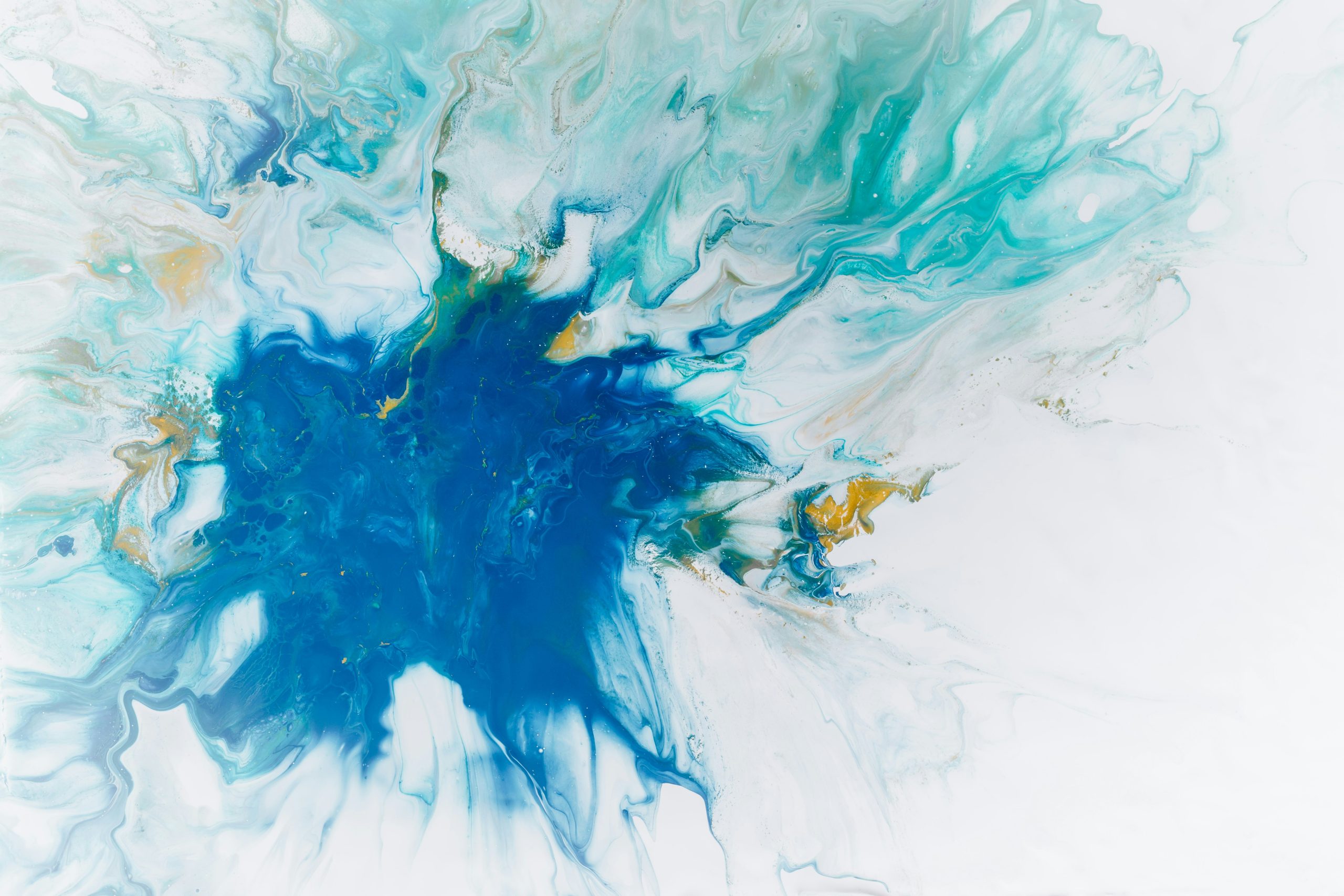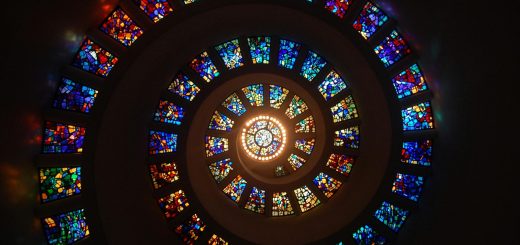The Story of the Gorgon Sisters in Greek Myth

Hey there, amazing readers! 🖐️ Just a quick note: yes, we know there are a lot of ads here. Trust us, we get it—it’s not the prettiest look, but they help us keep this blog alive and kicking. Those pesky little ads cover the costs of all the behind-the-scenes magic, from hosting and tech stuff to creating content we hope you’ll love.
We’re committed to delivering quality posts, and your support (even just sticking around despite the ads) means everything to us. So, bear with us, and thanks for helping us keep the good vibes rolling. Now, on to the fun stuff! 😉
TRANSLATE BUTTON AT THE END OF THE ARTICLE
A Quick Overview
When we think of Greek mythology, a few names often shine brighter than others.
Among these captivating figures are the Gorgon sisters, a trio steeped in mystery and legend.
These formidable beings—Medusa, Stheno, and Euryale—hold a unique place in the pantheon of Greek myths.
Their story is a mix of beauty, horror, transformation, and ultimately, strength.
In this article, we’ll explore their origins, characteristics, and significant roles in myths, as well as their lasting impact on culture today.
Unveiling the Enigmatic Gorgon Sisters of Greek Mythology
The Gorgon sisters are iconic figures in Greek mythology, often depicted as terrifying creatures.
They usually have snakes for hair and a gaze that can turn anyone to stone.
But there’s more to them than just their fearsome appearance.
These sisters come from a rich tapestry of stories, with roots that dig deep into ancient traditions.
To appreciate their story, let’s dive back to ancient Greece.
The Gorgons were not just monsters; they were once beautiful maidens.
Their transformation into creatures of horror is a tale of jealousy, punishment, and the whims of gods.
Each sister has her own story, yet together they embody themes of beauty and monstrosity.
What makes their narratives fascinating is the interplay between fear and admiration.
While they are feared for their abilities, they also command respect.
Their story speaks to the complexities of beauty and power.
How does one reconcile the two?
The Gorgon sisters challenge us to think about these themes in our own lives.
The Gorgon sisters, especially Medusa, have become symbols of various ideas—feminine rage, transformation, and the consequences of jealousy.
As we peel back the layers of their story, we’ll encounter various interpretations and cultural influences that keep their myth alive today.
In essence, the Gorgon sisters are a reminder of the duality of human nature.
They show us that behind every monstrous exterior, there may lie a more profound story waiting to be told.
Meet the Gorgon Sisters: Medusa, Stheno, and Euryale
Let’s meet our infamous trio.
Medusa is perhaps the most well-known, and for good reason.
Often depicted as both victim and villain, she captures our attention and sympathy.
But she’s not alone.
Her sisters, Stheno and Euryale, share the Gorgon legacy, each with her own personality and powers.
Medusa: The youngest sister, Medusa, is the only mortal Gorgon.
She is often portrayed as tragic.
Once a beautiful maiden, she was cursed by Athena as punishment for her actions in the temple of the goddess.
This curse transformed her into a being whose beauty was now a source of fear.
Medusa’s tale resonates deeply with themes of betrayal and loss, making her a complex character.
Stheno: Stheno is known for her fierce nature.
Unlike Medusa, she is immortal and embodies raw power.
She is often depicted as the most aggressive of the sisters.
Her name means "strength," reflecting her fierce protective instincts.
Stheno represents the unstoppable force of nature, a guardian who will do anything to protect her family.
Euryale: Euryale, the third sister, is also immortal.
She has unique abilities, including a piercing scream that can instill fear in the hearts of her enemies.
Her name means "far-springing," alluding to her agility and speed.
Euryale is the one who embodies the unpredictability of the Gorgon legacy.
She is less frequently mentioned in myths, but her role is equally vital.
Together, these sisters form a powerful triad.
While they may differ in strength and characteristics, their bond is unbreakable.
They symbolize not just monstrosity, but the strength found in sisterhood.
How many of us can relate to that?
It’s a reminder that we can rise together, no matter the challenges we face.
The Origins of the Gorgon Sisters: A Mythical Beginning
The origins of the Gorgon sisters are steeped in mythology.
They are generally considered daughters of Phorcys and Ceto, ancient sea deities.
This lineage connects them to the chaotic and unpredictable forces of nature.
It’s intriguing to think that from such origins, these fearsome beings emerged.
In early myths, Gorgons represented the dangers lurking in the deep sea.
Their appearance was often tied to the ancient Greeks’ fears of the unknown.
As the story evolved, so did their characteristics.
They transformed from mere representations of chaos into complex characters with rich narratives.
But how did they become monsters?
It all begins with Medusa.
She was originally a beautiful maiden, admired by many, including Poseidon.
In a tragic twist, Poseidon violated her in Athena’s temple.
Enraged by this desecration, Athena punished Medusa by transforming her into a Gorgon.
This punishment was profound—she became a monster, both feared and shunned.
Meanwhile, her sisters, Stheno and Euryale, retained their immortality and ferocity.
They became her protectors, fiercely loyal to their sister.
This bond between the sisters adds depth to their story.
They are not just individual characters; they represent a collective struggle against the forces that sought to tear them apart.
The transformation of Medusa, coupled with the unwavering support of her sisters, paints a vivid picture of resilience.
It’s a lesson about how we cope with adversity.
When faced with challenges, having a support system can make all the difference.
The Transformation: From Beauty to Monstrous Gorgons
The transformation of the Gorgon sisters is a pivotal aspect of their myth.
It’s not just about becoming a monster; it’s about the journey of change.
Medusa’s story is particularly poignant.
Once admired for her beauty, she became a figure of terror.
This transformation is often seen as a reflection of societal attitudes towards women.
Medusa’s once-beautiful face transformed into the grotesque representation of female rage and victimhood.
Many see this as a metaphor for how women can be demonized for their experiences and choices.
Stheno and Euryale, while they retained their monstrous forms, also embody a different kind of transformation.
They were not victims like Medusa but fierce protectors.
Their change from beings of beauty to violent guardians shows the different paths individuals take in response to trauma.
The sisters’ physical transformation is marked by their hair of snakes and eyes that can petrify.
But it is the emotional transformation that resonates more profoundly.
The feeling of powerlessness can lead to a fierce desire to protect oneself and those we love.
Their monstrous exterior becomes a shield against a world that has wronged them.
It’s a powerful reminder that sometimes our greatest strengths arise from our most painful experiences.
This complexity invites empathy from those who encounter their story.
The Powers of the Gorgons: Fearsome and Fascinating
The Gorgon sisters are not just remarkable for their terrifying appearance; they also possess extraordinary powers.
Their abilities reflect their nature and experiences, making them not only fearsome but also intriguing.
Petrifying Gaze: Perhaps the most famous of their powers is the ability to turn anyone who looks directly at them into stone.
This ability is a double-edged sword.
It protects them from their enemies but also isolates them from the world.
Superhuman Strength: Stheno and Euryale are known for their incredible strength and resilience.
They can overpower formidable foes, showcasing their fierce protectiveness.
Regeneration: The immortality of Stheno and Euryale grants them the ability to heal quickly from injuries.
This power further emphasizes their roles as defenders of their sister.
Piercing Scream: Euryale possesses a scream that can instill terror, serving as an early warning system for enemies.
This ability symbolizes the alertness that comes with being constantly on guard.
Control Over Nature: In some myths, the Gorgons have power over certain aspects of nature, reflecting their origins as sea deities.
This connection to nature adds another layer to their abilities.
The Gorgons embody the duality of power—strength can be both protective and isolating.
Their fearsome abilities challenge our perceptions of what it means to be powerful.
They show us that power can stem from vulnerability, and it can be a means of survival in a hostile world.
Medusa: The Most Famous of the Gorgon Sisters
Medusa often stands out as the most recognized of the Gorgon sisters.
Her story is rich, complex, and often tragic.
While her sisters are powerful, Medusa’s narrative evokes a sense of sympathy and deeper understanding.
Medusa’s transformation into a Gorgon serves as a reflection of societal treatment of women.
She became a symbol of how victims can be vilified instead of supported.
Instead of receiving compassion for her plight, she became a figure of terror.
In art, Medusa is depicted in various ways—sometimes as a monster, other times as a tragic figure.
Her head, adorned with snakes, has been used as a symbol of protection in various cultures.
It’s fascinating how her image has transcended the myth itself, representing both danger and empowerment.
Moreover, Medusa’s connection with heroes, particularly Perseus, adds another layer to her story.
The hero’s quest to slay her often overshadows her narrative, turning her into a mere obstacle.
However, this can also be interpreted as a commentary on how society views powerful women—often as adversaries to be defeated rather than individuals with their own stories.
Medusa’s legacy continues to inspire reinterpretations in literature, film, and art.
Many modern takes focus on her as a symbol of feminine rage and empowerment, shifting the narrative from villain to victim to hero.
This evolution reflects our changing understanding of gender dynamics and power.
Her story resonates with anyone who has felt misunderstood or unfairly judged.
Medusa reminds us that sometimes, strength lies in embracing our narratives, no matter how monstrous they may seem.
Stheno: The Fierce and Unyielding Sister of the Trio
Stheno, the lesser-known sister, has her own fierce story to tell.
She stands as a testament to loyalty and unyielding strength.
While Medusa captures most of the spotlight, Stheno’s tenacity cannot be overlooked.
As the eldest sister, Stheno embodies raw power.
Her immortality and ferocity make her a formidable guardian.
Unlike Medusa, who often elicits sympathy, Stheno represents unstoppable strength.
She faces challenges head-on and is unyielding in her resolve.
Stheno’s relationship with her sisters reveals a profound sense of loyalty.
She protects Medusa fiercely, illustrating the protective bond that siblings can share.
In many ways, she symbolizes the warrior spirit.
In myths, Stheno is often depicted as the one who challenges heroes, trying to defend her sister’s honor.
This role showcases her bravery and determination.
She doesn’t back down, even when faced with seemingly insurmountable odds.
Her character challenges the stereotype of women in mythology as passive or submissive.
Stheno refuses to be defined by her circumstances.
Instead, she rises as a protector, showcasing the warrior within.
Stheno’s fierce spirit resonates with themes of empowerment and resilience.
In her story, we find inspiration to stand firm in our beliefs and protect those we love.
She reminds us that strength can take many forms, and sometimes, it’s the fiercest protector who leaves the most lasting impact.
Euryale: The Enigmatic Gorgon with a Unique Gift
Euryale, the third Gorgon sister, remains somewhat enigmatic in the mythology.
Though often overshadowed by her siblings, she possesses distinct powers and characteristics that contribute to their narrative as a whole.
Euryale is immortal and known for her unique scream, which can terrify even the bravest souls.
This ability adds an intriguing dimension to her character.
While Medusa embodies tragedy and Stheno represents strength, Euryale is the embodiment of mystery and unpredictability.
Her name, meaning “far-springing,” suggests agility and speed.
In many myths, Euryale is depicted as swift, capable of evading danger.
This agility symbolizes adaptability—a vital quality in the face of adversity.
Euryale’s role in their family dynamic is also worth noting.
She complements her sisters, adding to the complexity of their bond.
While Stheno acts as the fierce protector, Euryale brings an element of unpredictability, keeping enemies on their toes.
In a way, Euryale represents the unseen aspects of struggle.
While her powers may not be as overtly destructive as her sisters, they reflect the subtleties of survival.
Her character prompts us to consider that strength can exist in many forms, often quiet yet effective.
Euryale’s story serves as a reminder that even in the shadows, we can find power.
She encourages us to embrace our unique gifts, however subtle, and to recognize their potential impact on those around us.
The Gorgons’ Role in Greek Myths and Legends
The Gorgon sisters play significant roles in various Greek myths, often intertwined with the stories of heroes and gods.
Their appearances usually signify danger, but they also embody deeper themes of transformation and resilience.
One of the most notable tales is that of Perseus, who set out to slay Medusa.
This quest brings the Gorgons to the forefront of the story.
Perseus’s encounter with Medusa highlights the themes of fear and courage.
While he ultimately succeeds in his mission, it raises questions about the nature of heroism and the treatment of women.
In some myths, the Gorgons serve as protectors of sacred spaces.
They embody the idea that true power lies in vigilance and defense of what is cherished.
Their monstrous forms serve as warnings to those who might trespass.
Moreover, the Gorgons symbolize the consequences of unchecked power and jealousy.
Medusa’s transformation is a direct result of Athena’s wrath, illustrating how divine actions can have profound implications on mortal lives.
This narrative echoes through various cultural stories, emphasizing the human experience of suffering and redemption.
The Gorgons have also inspired artistic representations throughout history.
From ancient pottery to Renaissance art, their image has been used to convey themes of power, fear, and beauty.
The duality of their existence—both terrifying and tragic—has fascinated artists and audiences alike.
In the broader landscape of Greek mythology, the Gorgons remind us of the complexities of life.
They capture the delicate balance between beauty and monstrosity, inviting reflection on our perceptions of fear and power.
Perseus and the Gorgons: A Legendary Encounter
The encounter between Perseus and Medusa is one of the most famous stories in Greek mythology.
This legendary tale highlights themes of bravery, cunning, and consequence.
Perseus, the son of Zeus, was tasked with acquiring Medusa’s head.
Armed with gifts from the gods, including a reflective shield from Athena, he approached the lair of the Gorgons.
This moment is filled with tension, as he must confront not just Medusa but the very essence of fear.
Using the reflective shield, Perseus avoided looking directly at Medusa.
This clever tactic illustrates the importance of strategy in overcoming seemingly insurmountable challenges.
He recognizes that the Gorgons are not just monsters; they are beings to be respected and understood.
When he finally beheaded Medusa, the act was both triumphant and tragic.
Perseus claimed her head as a weapon, but he also severed a connection to her story.
In this moment, he transformed her from a feared monster into a tool of power.
After her death, Medusa’s head continued to hold significant power.
Perseus used it to petrify his enemies, serving as a symbol of protection.
This cycle of violence raises poignant questions about the nature of power and its consequences.
The story of Perseus and Medusa reflects the complexities of bravery and heroism.
While Perseus is often celebrated as a hero, the tale also reminds us of the costs associated with triumph.
The Gorgon sisters, particularly Medusa, transform from victims into symbols of strength and resilience.
This encounter invites contemplation on how we interpret heroism.
Are we celebrating those who conquer monsters, or are we acknowledging the stories of those deemed monstrous?
It’s a fine line, and the Gorgon sisters remind us to reflect on the narratives we craft.
The Gorgon Sisters in Modern Culture: A Lasting Legacy
The legacy of the Gorgon sisters extends far beyond ancient myths.
They have penetrated modern culture, inspiring countless works of art, literature, and film.
Their complex narratives resonate with contemporary themes, making them timeless figures.
Medusa, in particular, has become a symbol of feminine rage and empowerment.
Artists and writers have reimagined her story, often framing her not as a monster but as a victim of circumstance.
This shift allows for deeper exploration of gender dynamics and societal expectations.
In literature, Medusa appears in various retellings, often focusing on her strength and resilience.
Novels like "The Gorgon’s Curse" and "Medusa: A Love Story" highlight her journey from victim to powerful figure.
These reinterpretations challenge traditional narratives and invite readers to empathize with her plight.
In film, the Gorgon sisters have made memorable appearances.
From classic monster movies to contemporary fantasy films, they continue to captivate audiences.
Their ability to embody both horror and beauty keeps their story alive in popular culture.
Moreover, the Gorgons serve as powerful metaphors in discussions around trauma and healing.
They represent the struggle against societal expectations and the fight for agency.
In this way, their legacy continues to evolve, reflecting the ongoing conversations around gender, power, and identity.
The Gorgon sisters are not just relics of the past; they are living symbols of resilience and strength.
As we engage with their stories, we find parallels to our own experiences.
They remind us that transformation can arise from pain, and strength can be born from struggle.
Celebrating the Gorgon Sisters: Strength and Sisterhood in Myth
The Gorgon sisters embody themes of strength, resilience, and sisterhood.
Their stories, while often dark, highlight the importance of familial bonds and support in navigating adversity.
In a world that often pits women against each other, the Gorgons remind us of the power of solidarity.
Their fierce loyalty to one another showcases the beauty of sisterhood.
They stand together against the forces that seek to divide them.
Medusa’s transformation into a monster becomes a catalyst for her sisters’ unwavering support.
Stheno and Euryale’s protective nature highlights the strength that can be found in unity.
Together, they challenge the notion that vulnerability equates to weakness.
Their story invites us to reflect on our relationships with those we love.
In times of struggle, it’s often our family and friends who lift us up.
The Gorgon sisters teach us that strength is not just individual; it’s collective.
As we celebrate their legacy, we recognize that their journey is not just one of horror but of empowerment.
They inspire us to embrace our narratives, to support one another, and to find strength in our struggles.
The Gorgon sisters, with their rich stories and complex characters, continue to resonate with audiences today.
They stand as powerful reminders of the beauty of resilience and the bonds that tie us together.
In their tale, we find echoes of our own lives, encouraging us to rise and support each other, no matter the challenges we face.
Conclusion
The story of the Gorgon sisters—Medusa, Stheno, and Euryale—offers a multifaceted exploration of beauty, power, and transformation.
From their origins as beautiful maidens to their fearful representations, their tale prompts us to reflect on our perceptions of strength and vulnerability.
As we navigate their stories, we discover themes of sisterhood, loyalty, and resilience that continue to resonate today.
Their legacy lives on in modern culture, inspiring reinterpretations that challenge traditional narratives.
These sisters remind us that behind every monster, there can be a story of pain, power, and ultimately, triumph.
In celebrating the Gorgon sisters, we embrace the complexities of our experiences.
We find strength in unity, reminding ourselves that we can rise together in the face of adversity.
Their myth stands as a testament to the enduring power of storytelling—an invitation to reflect on our own narratives and the bonds that shape our lives.

The Enlightenment Journey is a remarkable collection of writings authored by a distinguished group of experts in the fields of spirituality, new age, and esoteric knowledge.
This anthology features a diverse assembly of well-experienced authors who bring their profound insights and credible perspectives to the forefront.
Each contributor possesses a wealth of knowledge and wisdom, making them authorities in their respective domains.
Together, they offer readers a transformative journey into the realms of spiritual growth, self-discovery, and esoteric enlightenment.
The Enlightenment Journey is a testament to the collective expertise of these luminaries, providing readers with a rich tapestry of ideas and information to illuminate their spiritual path.
Our Diverse Expertise 🌟
While our primary focus is on spirituality and esotericism, we are equally passionate about exploring a wide range of other topics and niches 🌍📚. Our experienced team is dedicated to delivering high-quality, informative content across various subjects ✨.
To ensure we provide the most accurate and valuable insights, we collaborate with trusted experts in their respective domains 🧑🏫👩🏫. This allows us to offer well-rounded perspectives and knowledge to our readers.
Our blog originally focused on spirituality and metaphysics, but we’ve since expanded to cover a wide range of niches. Don’t worry—we continue to publish a lot of articles on spirituality! Frequently visit our blog to explore our diverse content and stay tuned for more insightful reads.







